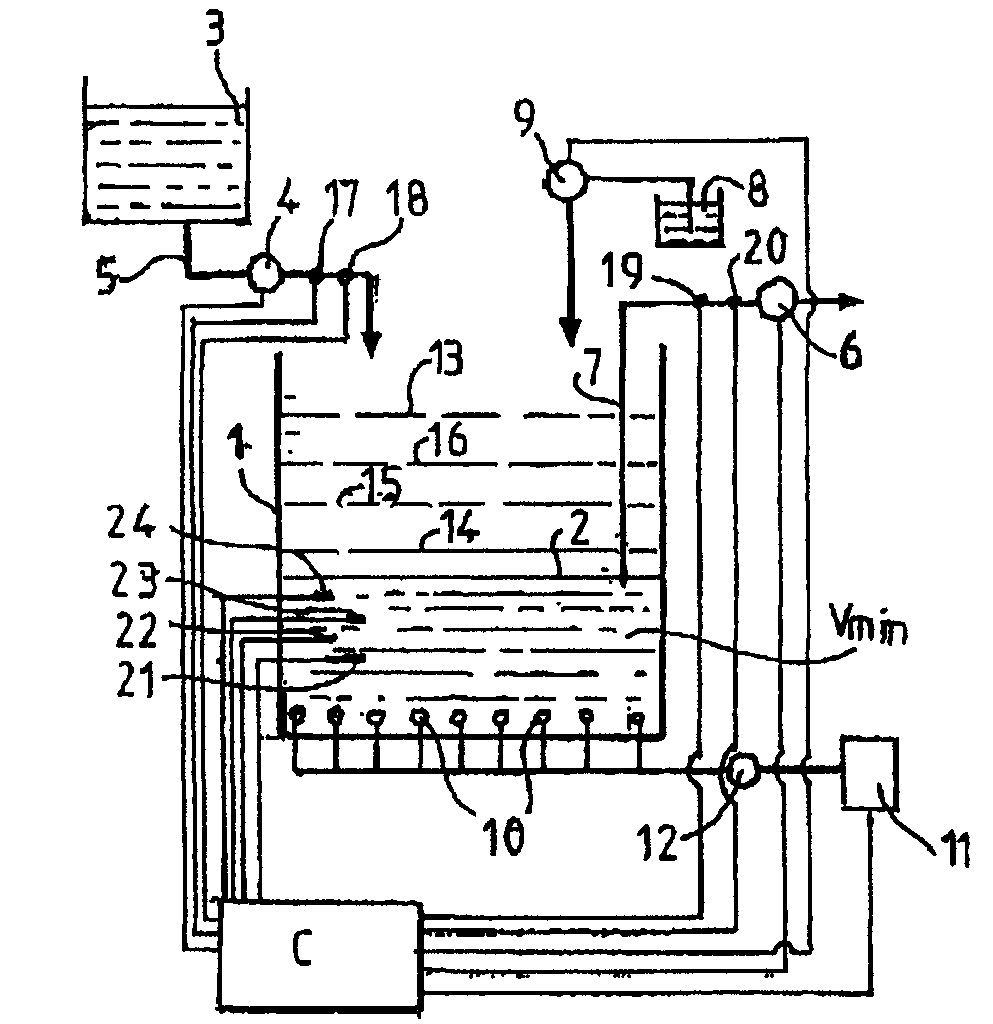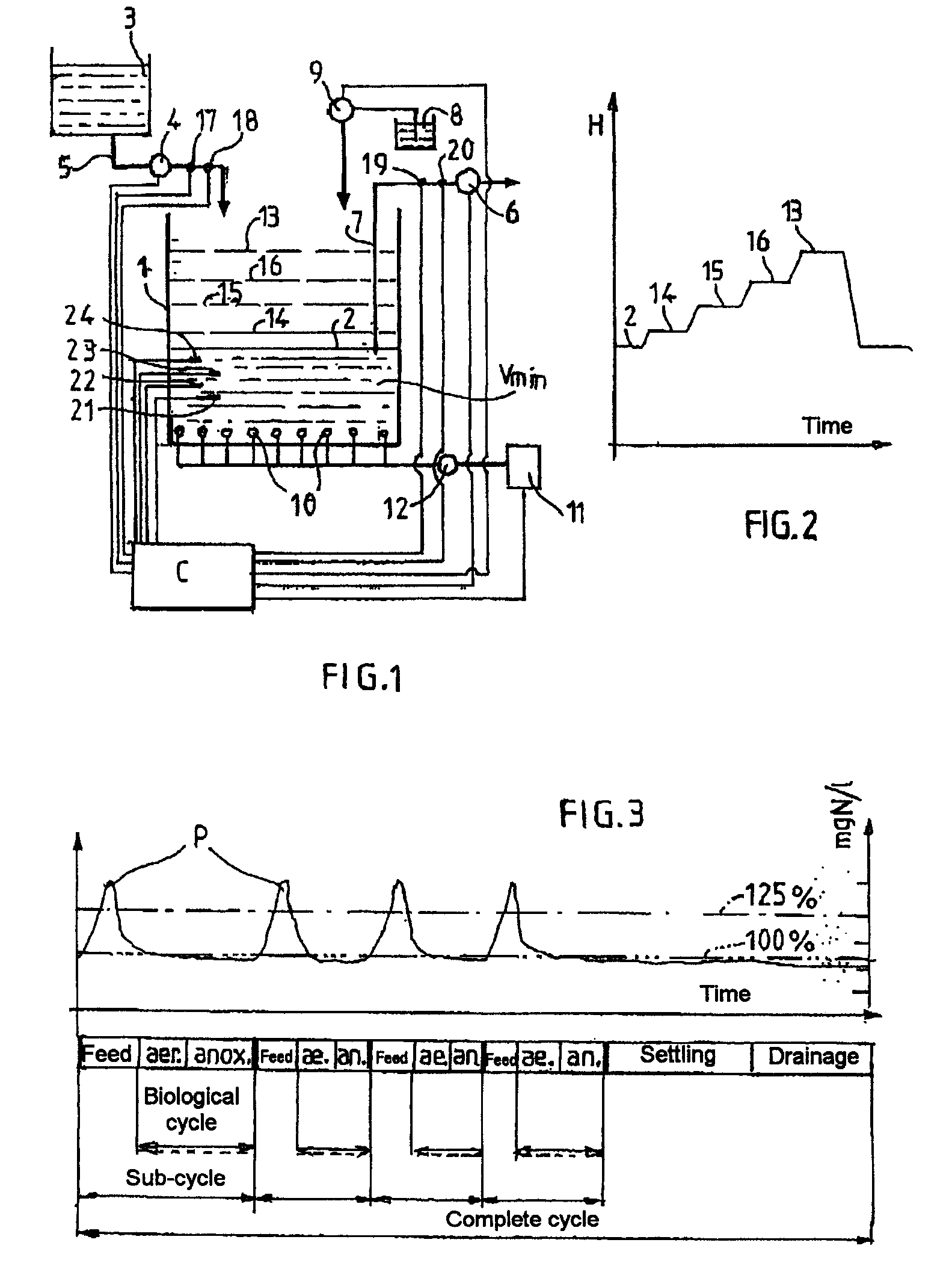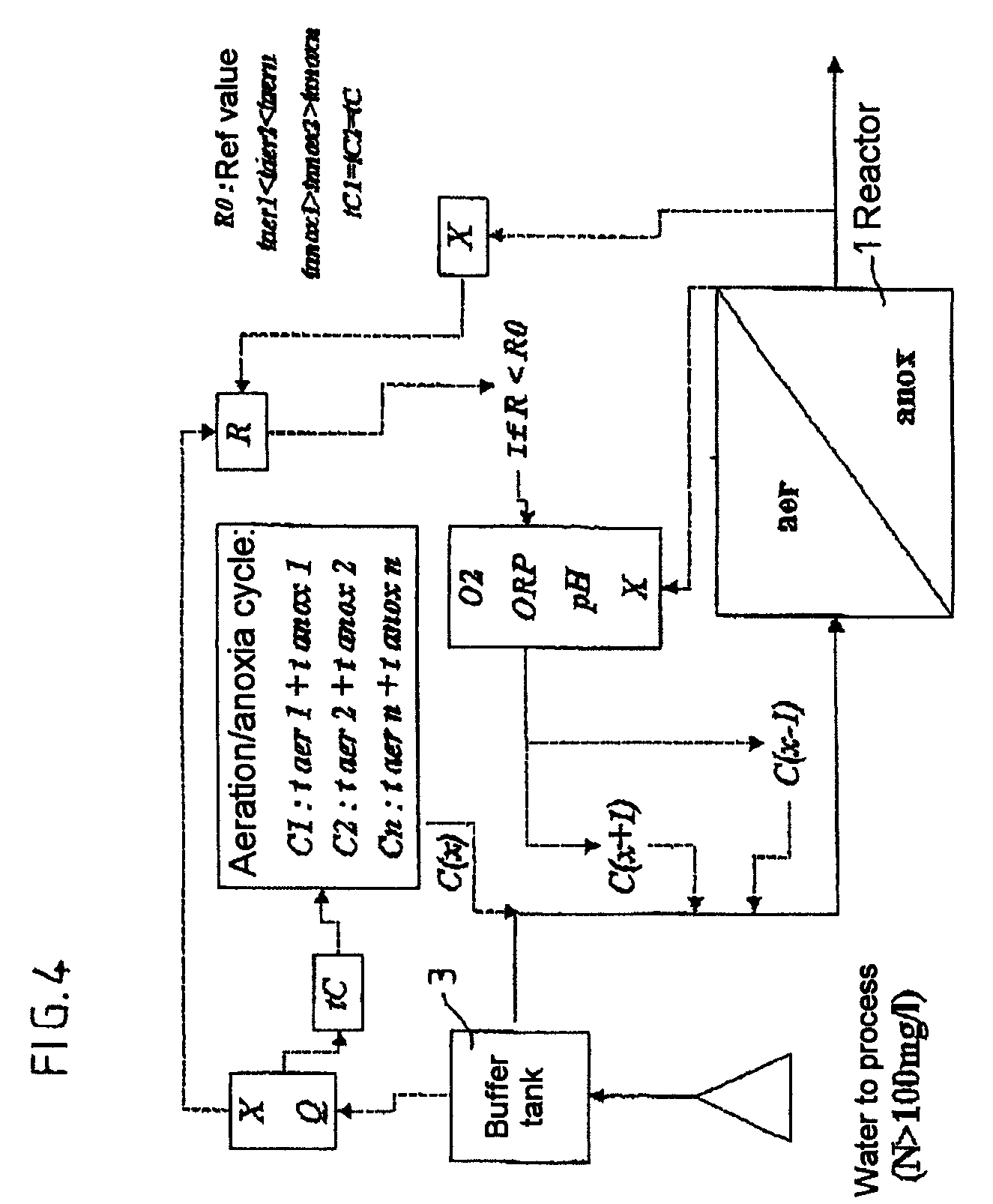Method and arrangement for processing nitrogen-concentrated effluents in a sequential fractionated cycle biological reactor
a biological reactor and fractionation cycle technology, applied in biochemistry equipment, water/sludge/sewage treatment, biochemistry apparatus and processes, etc., can solve the problems of increasing control difficulties of many pollutant processing installations, ammonia liable to cause environmental damage, and expensive revamping of existing processing stations, so as to improve the self-regulation of the ph of the medium
- Summary
- Abstract
- Description
- Claims
- Application Information
AI Technical Summary
Benefits of technology
Problems solved by technology
Method used
Image
Examples
example
[0099]The average nitrogenous feed of a digested sludge centrifugation supernatant is 150 kg N / d for an average concentration of 600 mg N—NH4+ / l, but varies between 400 and 1000 N—NH4+ / l. It is also considered that the feed is stopped for three days after a centrifuge breakdown around the twentieth day giving rise to a zero flow (FIG. 6).
[0100]This nitrogenous feed is processed in a sequential biological reactor (SBR) with a capacity of 450 m3 and a liquid height of between 3 and 4 m, in three complete cycles of 8 h / d. A fraction of the minimum feed (Nalimmin) into 4 phases was calculated with the following assumptions: [NH4+]eff=50 mg N / l, [NH3]inhib=10 mg N—NH3 / l, pH=8.3, T=25° C. The resulting biological time tC, of 90 minutes, was consistent with the minimum fixed for the system. Four “feed / aeration / anoxia” sub-cycles were therefore applied before the settling and withdrawal steps in order to avoid inhibition by the ammoniacal concentration at the highest pH, so as to apply a su...
PUM
| Property | Measurement | Unit |
|---|---|---|
| Temperature | aaaaa | aaaaa |
| Temperature | aaaaa | aaaaa |
| Fraction | aaaaa | aaaaa |
Abstract
Description
Claims
Application Information
 Login to View More
Login to View More - R&D
- Intellectual Property
- Life Sciences
- Materials
- Tech Scout
- Unparalleled Data Quality
- Higher Quality Content
- 60% Fewer Hallucinations
Browse by: Latest US Patents, China's latest patents, Technical Efficacy Thesaurus, Application Domain, Technology Topic, Popular Technical Reports.
© 2025 PatSnap. All rights reserved.Legal|Privacy policy|Modern Slavery Act Transparency Statement|Sitemap|About US| Contact US: help@patsnap.com



